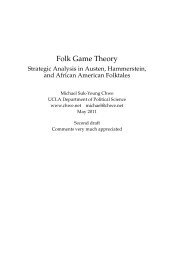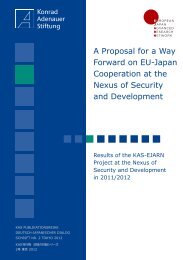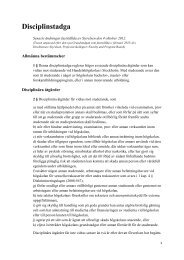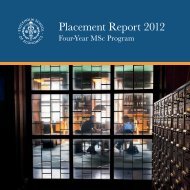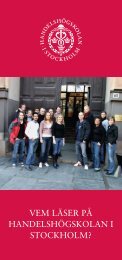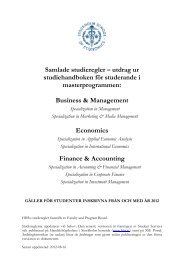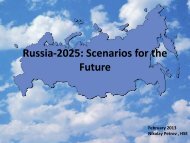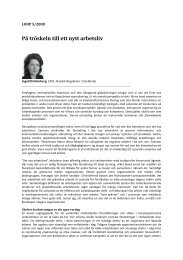Microfinance Banks and Household Access to Finance
Microfinance Banks and Household Access to Finance
Microfinance Banks and Household Access to Finance
- No tags were found...
Create successful ePaper yourself
Turn your PDF publications into a flip-book with our unique Google optimized e-Paper software.
household types with the interaction effects Low income*D.ProCredit close <strong>and</strong> Informalincome*D.ProCredit close. Columns (1-4) display estimates for those household pairs whichare close <strong>to</strong> the retail bank. For this subsample we provide both OLS <strong>and</strong> IV estimates. In ourIV estimates we instrument D.ProCredit as in Table 8 with the 2010 PSU averages of LowIncome, Informal, Female, Muslim as well as Town close. For results <strong>and</strong> diagnostic statisticsof the first stage regression we refer the reader <strong>to</strong> Table 8, column (1). Columns (5-6) ofTable 10 display estimates for those household pairs which are not close <strong>to</strong> the retail bank.Here we provide only OLS estimates due <strong>to</strong> the weakness of our instruments in thissubsample (see Table 8, column 2).The column (1-2) estimates of Table 10 confirm our univariate findings for households inlocations close <strong>to</strong> a retail bank. The positive <strong>and</strong> significant estimate for Low income*D.ProCredit close suggests that in locations where Procredit opens a new branch low-incomehouseholds increase the use of bank accounts more than high-income households. Our pointestimates suggest that a new ProCredit branch increases the likelihood of using a bankaccount by 18 percentage points more for low income households than for high incomehouseholds. The column (3) estimates suggest further, that the differential impact of newProCredit branches in low-income households is only partly driven by the endogeneity ofbranch locations. The point estimates in our IV specifications suggest that a new ProCreditbranch increases the likelihood of using a bank account by 16 percentage points more for lowincome households than for high income households. By contrast the insignificant estimatefor Low income* D.ProCredit close in columns (2) <strong>and</strong> (4) suggests that in locations whereProCredit opens a new branch informal-income households are not more likely <strong>to</strong> open a bankaccount as compared <strong>to</strong> high income households.The column (5-6) results also confirm our univariate findings for households in locationsnot close <strong>to</strong> a retail bank. The significant estimates for Low income*D.ProCredit close <strong>and</strong>Informal income* D.ProCredit close suggest that when ProCredit opens a new branch in these26




